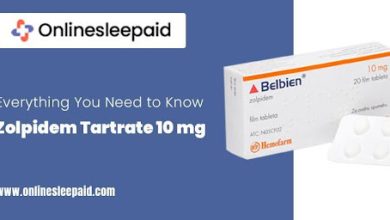For parents reeling from a Batten disease diagnosis, one of the first and most painful questions is, “How did this happen?” The answer lies in genetics, the blueprint of life passed down through generations. The vast majority of Batten disease types are inherited in a pattern called autosomal recessive inheritance. Understanding this concept is the first step for families to grasp how the disease appeared in their child and what it means for the rest of their family. It is a scientific explanation that often carries a heavy emotional weight, but knowledge is a powerful tool for navigating the future.
This is not about blame or fault; it is about the random chance of biology. Both parents of a child with an autosomal recessive condition are, in almost all cases, unknowing carriers of a single non-functional gene. This guide will break down the principles of this inheritance pattern and explain the vital role of genetic counseling in helping families understand their unique situation and make informed decisions about their future.
The Genetics of Chance: Autosomal Recessive Inheritance Explained
Imagine that for every gene, we receive two copies—one from our mother and one from our father. These genes act as recipes for making proteins that our bodies need to function. For the CLN genes associated with Batten disease, a single working copy is enough to produce a sufficient amount of the required enzyme to keep cells healthy. A “carrier” is a person who has one working copy of a CLN gene and one non-working, or mutated, copy.
Because the carrier has a functional copy, they are perfectly healthy and typically have no idea they carry the mutation. A problem only arises when two carriers have a child together. With each pregnancy, there are four possible outcomes, each with an equal 25% chance:
- The child inherits two working copies and is unaffected and not a carrier.
- The child inherits the working copy from the mother and the mutated copy from the father, becoming a carrier like their parents.
- The child inherits the mutated copy from the mother and the working copy from the father, also becoming a carrier.
- The child inherits the mutated copy from both parents. Without a functional copy of the gene, they cannot produce the necessary enzyme and will be affected by Batten Disease.
This 1-in-4 chance is the same for every single pregnancy, regardless of previous outcomes.
Finding Answers: The Role of Genetic Testing and Carrier Screening
The definitive genetic diagnosis of a child is made through sequencing their DNA, usually from a blood sample, to find the two specific mutations in one of the CLN genes. Once the child’s mutations are identified, it confirms the diagnosis and opens the door to a process called cascade screening. This involves offering carrier testing to other family members.
Parents are confirmed as carriers, and testing can be offered to siblings of the affected child, who have a 2-in-3 chance of being a carrier. Aunts, uncles, and cousins can also be tested to understand their carrier status. This information is intensely personal but can be crucial for their own future family planning. It allows family members to make informed reproductive choices, such as pursuing prenatal diagnosis or preimplantation genetic diagnosis (PGD) in future pregnancies.
The Guiding Hand: Why Genetic Counseling is Essential
Receiving a genetic diagnosis and learning about carrier status is complex, both scientifically and emotionally. A genetic counselor is a healthcare professional trained to help families understand and adapt to the medical, psychological, and familial implications of genetic contributions to disease. They are essential members of the care team for families facing rare genetic diseases.
During a genetic counseling session, the counselor will explain the test results in understandable terms, draw a family tree (a pedigree) to trace the inheritance pattern, and discuss the risks and options for future pregnancies. They provide a safe, non-judgmental space to process feelings of guilt or anger and connect families with support resources. For reliable preliminary information, platforms like medicationsdrugs.com can offer foundational knowledge before a session.
Looking to the Future: Reproductive Options
For carriers of a Batten disease gene mutation, knowing their status opens up several reproductive options for the future. Prenatal testing, through procedures like chorionic villus sampling (CVS) or amniocentesis, can determine if a fetus is affected by the disease early in a pregnancy. This provides parents with information to make personal decisions about continuing the pregnancy.
Another powerful option is Preimplantation Genetic Diagnosis (PGD), which is used in conjunction with In Vitro Fertilization (IVF). Embryos are created in a lab and genetically tested before being transferred to the uterus. Only embryos that are unaffected by the disease are selected for implantation, guaranteeing that the resulting child will not have the condition. These technologies offer hope and choice to families determined to build their families without passing on the disease.
References
To find a board-certified genetic counselor in your area, consult the National Society of Genetic Counselors (NSGC). For more information on the genetics of rare diseases, visit the Genetic and Rare Diseases Information Center (GARD).




